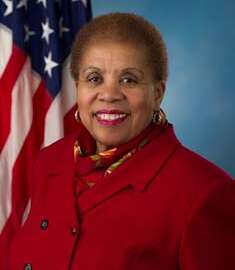
Not dead yet: Social Security’s project to verify life
The Social Security Administration is pairing up with the Center for Medicare and Medicaid Services to ensure that social security benefit recipients over the age...
Social security numbers are to bureaucracy what souls are to theology: they define you as a person, and they continue to exist after you die. The problem arises when the Social Security Administration isn’t notified of the death, and the payments just keep going out.
To address this issue, the SSA’s Medicare Non-utilization Project cross-references records with the Center for Medicare and Medicaid Services to verify deaths and discontinue payments for individuals over the age of 90, Kimberly Byrd, deputy assistant inspector general for audits at SSA, told the Federal Drive with Tom Temin. The idea is that a person above the age of 90 is likely to make frequent use of Medicare services, especially Part D, which covers medications.
Most of the time, the SSA relies on reports from funeral homes, hospitals and family members. Currently, 45 states participate in an electronic death registration process.
“The vast majority of deaths are reported correctly, but unfortunately, it’s not perfect,” Byrd said. “There are some that slip through.”
This isn’t the first time SSA has tried this project . The agency attempted the same thing in 2001, but health care records weren’t robust enough, Byrd said. But SSA’s office of the inspector general decided to try again, launching a study to determine whether it would be a good use of resources. They found CMS’ records were far more comprehensive now, so the program launched in September 2013.
The program looked at 175,000 individuals, about 20 percent of the total population of customers shared by CMS and SSA.
“For this particular project, in the last three years, SSA has identified almost 160 million erroneous payments to individuals who are now deceased, but have been receiving payments for up to 30 years,” Byrd said.
Payments like these are called ‘improper payments,’ defined by the Office of Management and Budget’s Payment Accuracy website as “payments made by the government to the wrong person, in the wrong amount, or for the wrong reason.”
The improper payment rate for SSA in fiscal 2016 was 0.6 percent, at a total of $5 billion in improper payments out of a total outlay of $862.7 billion. The target rate was 0.4 percent. Since 2009, SSA’s rate has hovered between 0.3 and 0.6 percent.
The MNUP is running alongside others that are trying to accomplish the same goal: identifying and stopping Social Security payments going to deceased individuals in order to reduce the improper payment rate. The total number of these payments is unknown.
One other project is matching data with other federal sources, such as the State department. Another program monitors for usage of social security numbers belonging to people known to be deceased.
Byrd said at this point, the SSA does not retire SSNs, meaning they do not die alongside the person they belong to. Currently, the SSA records the date of death, and shares that data with other federal agencies that provide benefits, such as the Department of Veterans Affairs.
Copyright © 2025 Federal News Network. All rights reserved. This website is not intended for users located within the European Economic Area.
Daisy Thornton is Federal News Network’s digital managing editor. In addition to her editing responsibilities, she covers federal management, workforce and technology issues. She is also the commentary editor; email her your letters to the editor and pitches for contributed bylines.
Follow @dthorntonWFED



